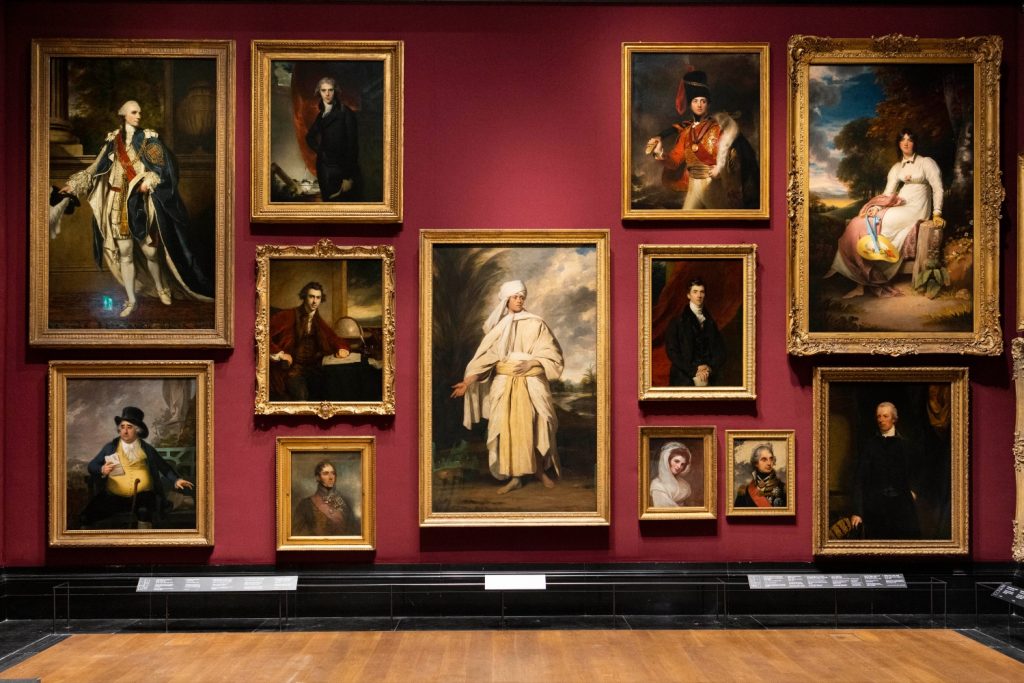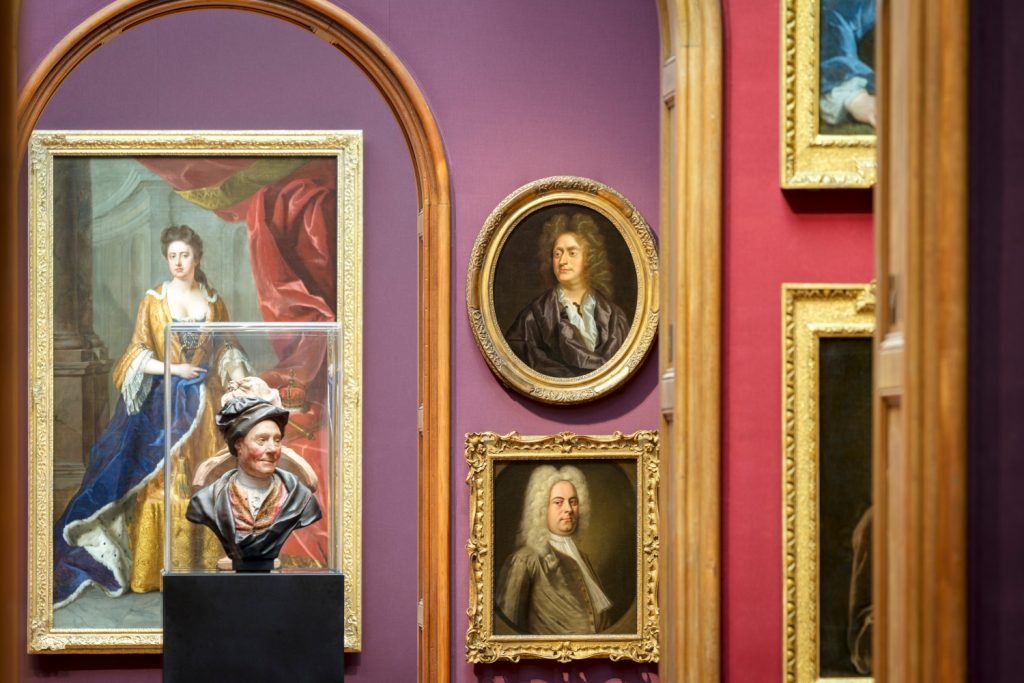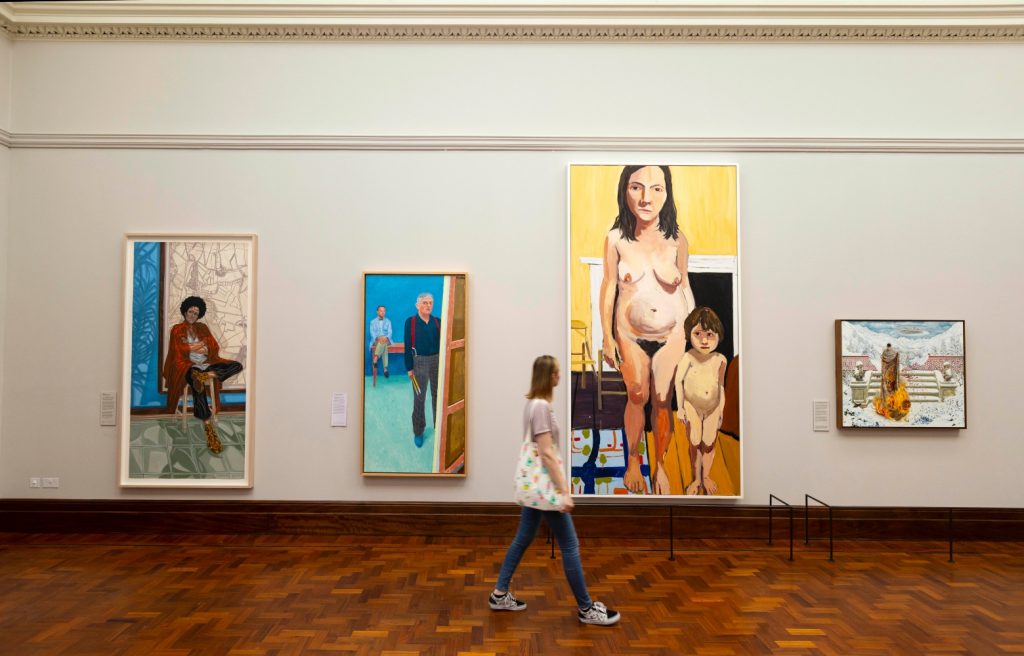The National Portrait Gallery in London welcomes the public tomorrow for the first time in three years after a $52 million renovation, the first of its kind since the museum opened in 1896. The finished product is undoubtedly elegant, but the rehang is disappointing.
The museum has long been in the shadow of its relatively stately and world-famous neighbour, the National Gallery. Instead of a majestic facade overlooking Trafalgar Square, visitors entered the building through an unassuming side door. Inevitably, the NPG seized the opportunity to create a slightly grander entrance on the other side of the National Gallery, a stone’s throw from Leicester Square. Three new bronze doors feature portraits of all the women Tracey Emin imagined in each of its 45 panels, a retort to the roundels on the rest of the facade which are filled with centuries-old images of prominent men.

The “Portrait Portrait Portrait!!!” exhibition, featuring Sir Joshua Reynold Portrait of Mai (Omai) (1776) at the National Portrait Gallery in London. Photo: © David Parry.
Once inside, visitors are greeted by an airy main hall before being quickly taken by escalator to level three, where the portrait’s story apparently begins with the Tudors. The presentation of the works is conventional, in some cases even old-fashioned “salon style”, but the galleries contain some contemporary twists to attract new audiences. These include screens showing short films on topics such as the painting techniques behind Tudor art or the scientific methods used to analyze it today.
A very generous number of rooms have been dedicated to this somewhat repetitive period and few examples really stand out, although visitors will appreciate spotting the occasional masterpiece like Queen Elizabeth I’s ‘The Ditchley Portrait’. The place of honor is given to Joshua Reynold’s Portrait of Mai (1776), which was recently purchased by the NPG with assistance from the Getty Museum.
Another suite of bedrooms on the second floor is dedicated to the Victorian era and filled with the usual suspects: unofficial-looking gentlemen and resplendent royals. A modest attempt is made to broaden our perspective via screens that offer the chance to flick through images of London street life, including flower vendors in Covent Garden and Italian artists.

A view through the ‘Art, Science and Society’ exhibition at the National Portrait Gallery in London. Photo: © Gareth Gardner for Nissen Richards Studio.
Next comes a meager fund of modern and contemporary art from 1945, confined to a few rooms. Still, it’s good to see more familiar faces.
‘Making the Modern World’ counts among its highlights Maggi Hambling’s portrait of British Nobel Prize-winning chemist Dorothy Hodgkin (1985) and a new posthumous portrait of Terrence Higgins by Curtis Holder, which was commissioned to mark the 40th anniversary by Terrence Higgins. Trust, a charity providing HIV services. The multi-layered drawing shows the three-stage pattern of Higgins’ life, from adolescence through his time in the Navy before culminating in the final weeks before his death in 1982.
The contemporary galleries are surprisingly easy to miss, but it’s worth heading to the Weston Wing pokier to see works like Toyin Ojih Odutola. Sadie (2018-19) of the 2008 self-portrait of acclaimed author Zadie Smith and Chantal Joffe with her daughter Esme. Another small selection of works tucked away to the side of the main staircase examines how a wide variety of female artists have chosen to portray themselves on canvas.

The Mary Weston Gallery Contemporary Collection in the Weston Wing of the National Portrait Gallery, London. Photo: © David Parry.
The museum has decided not to include in its permanent collection a famous portrait of Princes William and Harry made in 2010 by Nicky Philipps. The decision sparked speculation that the museum’s royal patron, Kate Middleton, may have pressured curators to remove the work, following the high-profile rift between the two brothers. THE the museum denied the accusationnoting that the work was removed from public display in August 2018, two years before the museum closed for renovations in 2020.
Tomorrow’s opening festivities will include the launch of the First Look Festival, a program of events, talks and activities for audiences of all ages that welcomes musician Paul McCartney and Tracey Emin as featured guests.
Visitors delighted to see the museum inaugural exhibition “Paul McCartney Photographs 1963–64” will have to wait until it opens on June 28 (until October 1). In the meantime, “Yevonde: Life and Colour” offers the first major retrospective of the English photographer, suffragist and pioneer of color photography in the 1930s (until October 15).
More trending stories:
Follow Artnet News on Facebook:
Want to stay one step ahead of the art world? Subscribe to our newsletter to receive breaking news, revealing interviews and incisive reviews that move the conversation forward.
